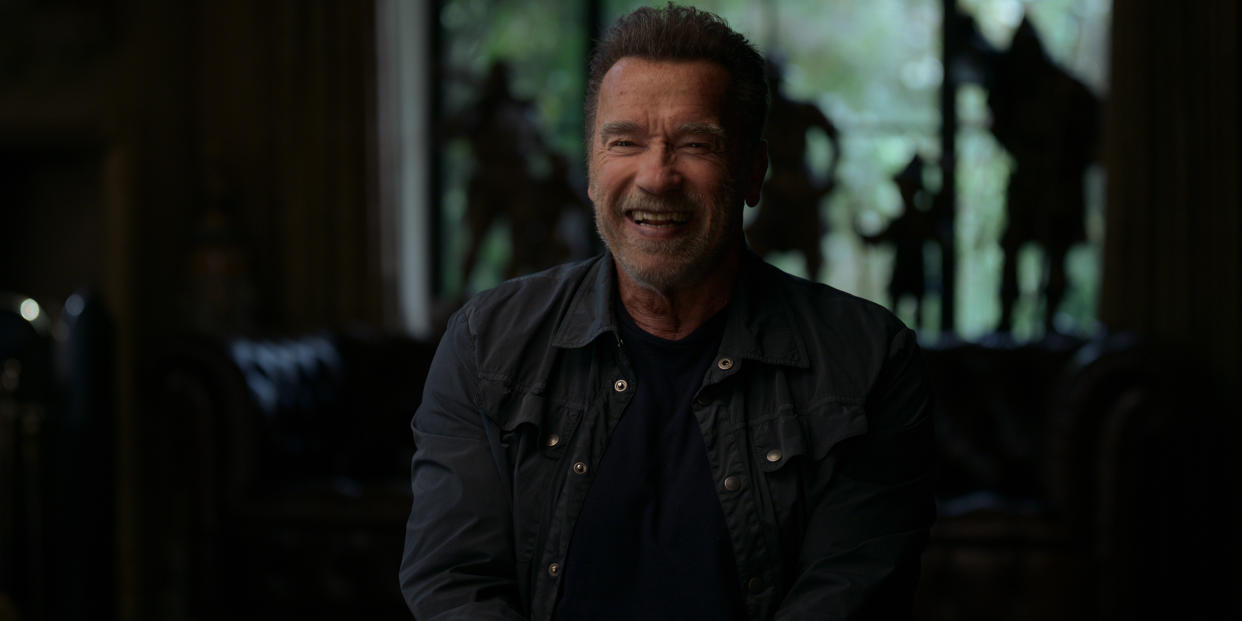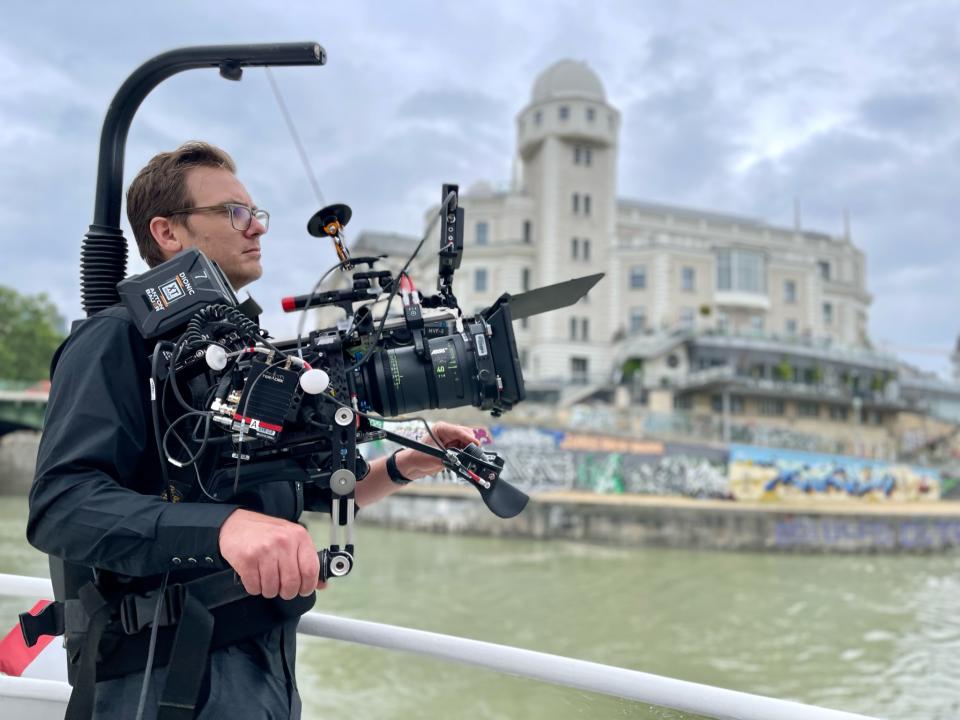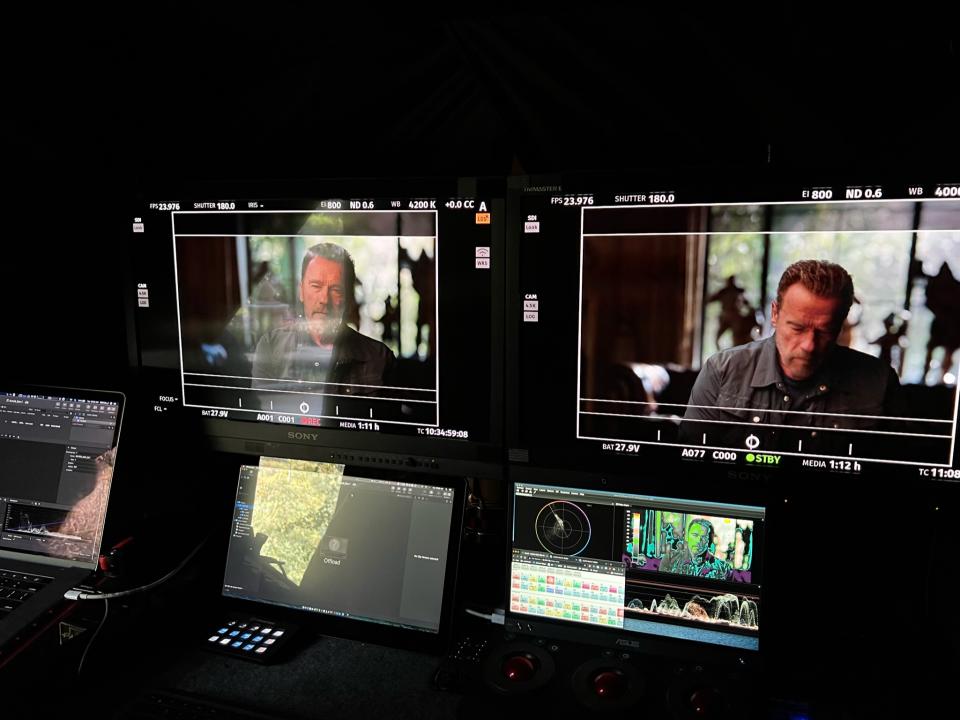How Lighting and Lenses Revealed the Man Within the Icon in Schwarzenegger Doc ‘Arnold’

- Oops!Something went wrong.Please try again later.
When cinematographer Logan Schneider came on board Netflix’s “Arnold,” a three-part documentary series about bodybuilder, movie star, and politician Arnold Schwarzenegger, the first thing he did was take a deep dive into the actor’s filmography. “I watched all of his movies and it was really fun to see that progression,” Schneider told IndieWire, noting that he stopped at “Eraser” when shooting took over his life. Seeing all of Schwarzenegger’s output up through 1996 was enough to give Schneider an appreciation of the actor as an icon, but that was only one side that he and director Lesley Chilcott wanted to convey. “He’s a larger-than-life guy, but we wanted to get past that and connect with his past and his really unique American dream story. We were trying to do something cinematic and iconic but also make sure the important moments felt personal and intimate.”
To that end, Schneider chose to apply techniques he had learned on narrative films to “Arnold,” shooting large format on Arri Mini LF cameras and restricting himself largely to prime lenses rather than the zooms more typically favored in vérité documentaries. “Shooting with primes keeps me from being sloppy,” Schneider said. “If I put on a 40mm wide open and keep it sharp, I can get a shot that’s natural and in the moment but not like I’m chasing it. It’s not always easy, and it doesn’t always work, but most of the time it does and at the end of the day I’d rather have four great shots than 10 OK shots.”
More from IndieWire
The series’ many vérité scenes presenting Schwarzenegger working out, feeding his animals, visiting his hometown in Austria and more were methodically constructed by Schneider and Chilcott to give the editors the kind of coverage they would expect on a fiction feature. “We’re trying to get a wide and medium and overs and shoot through doorways to build a scene like a narrative. It’s less about capturing every moment than getting across the feeling of it.”

The 75-year-old Schwarzenegger’s still-active lifestyle presented additional challenges for Schneider when it came to capturing the footage he needed with the discipline he desired. “Arnold’s hard to keep up with,” Schneider said. “He’s always doing something, so I had to pick my battles and get enough pieces for the editor to be poetic with. I can’t get every shot because Arnold is not going to stop. He’s just moving through his life.”
For Schneider, the key to getting carefully composed and lit coverage often came down to keeping things simple and stripping away extraneous footage. “It’s about finding the heart of the scene the way you would breaking down a script on a narrative project. When do I need a reaction shot? When do I need to let it breathe and back out through a doorway and give it some isolation so that the editor can build this character in a way that’s relatable?”
Schneider noted that it’s always a struggle to maintain a consistent visual style in documentaries, but he benefited from being on “Arnold” every single day — something that is rarely afforded to cinematographers in the doc world. Still, Schneider found maintaining visual cohesion to be a challenge, even in segments that look simplest to the viewer: The interviews shot with Schwarzenegger in his home office. The crew shot over 30 hours of interview footage spread out over six months, which meant the weather conditions kept shifting. “It became about lighting the foreground so that it could remain consistent through all of those changes, with one light outside to connect the house to the indoors,” Schneider said.

Luckily, Schneider was able to conduct lighting tests in the space with Schwarzenegger ahead of the shoot, which taught him how to connect the background to the foreground in a way that would be minimally impacted by the weather. The tests also helped Schneider strike a balance between “Arnold Schwarzenegger” and the real man that he and Chilcott were seeking. “We ended up with this three-quarter top light that’s both dramatic and flattering,” he said, adding that blending warm and cool tones helped provide the naturalism he was seeking to humanize his subject. “We had a backlight that was very cool, then less cool and then warm, until you get to a super warm eyelight that brought out all of the skin tones the way they would look in real life.”
Those lighting tests are what led Schneider to shoot large format with spherical signature prime lenses as well. “We tested anamorphic lenses, but they felt too immersive, too much like we were in a movie,” Schneider said. “Spherical large format felt very present and focused, so that’s the way we went.”
Ultimately, Schneider hopes the audience isn’t aware of the care and thought that went into each choice behind lighting, lenses, and coverage. “The idea is that when you’re watching it, you’re not distracted by some component of the technical end,” he said. “It looks the way it would if you were just sitting there talking to him. That’s the goal.”
Best of IndieWire
Sign up for Indiewire's Newsletter. For the latest news, follow us on Facebook, Twitter, and Instagram.

